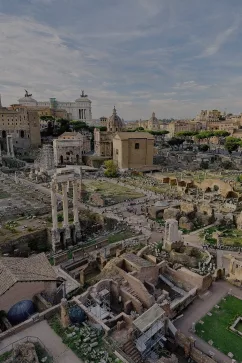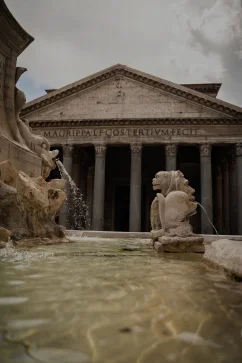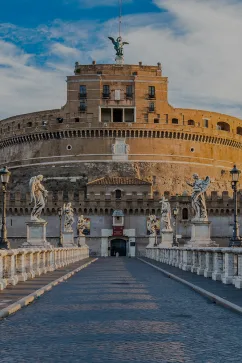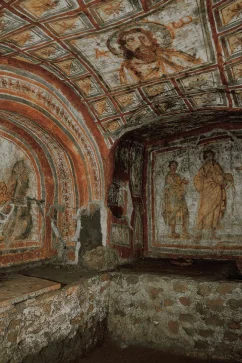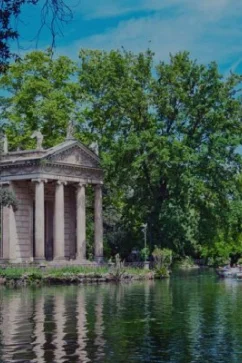Fontana Di Trevi
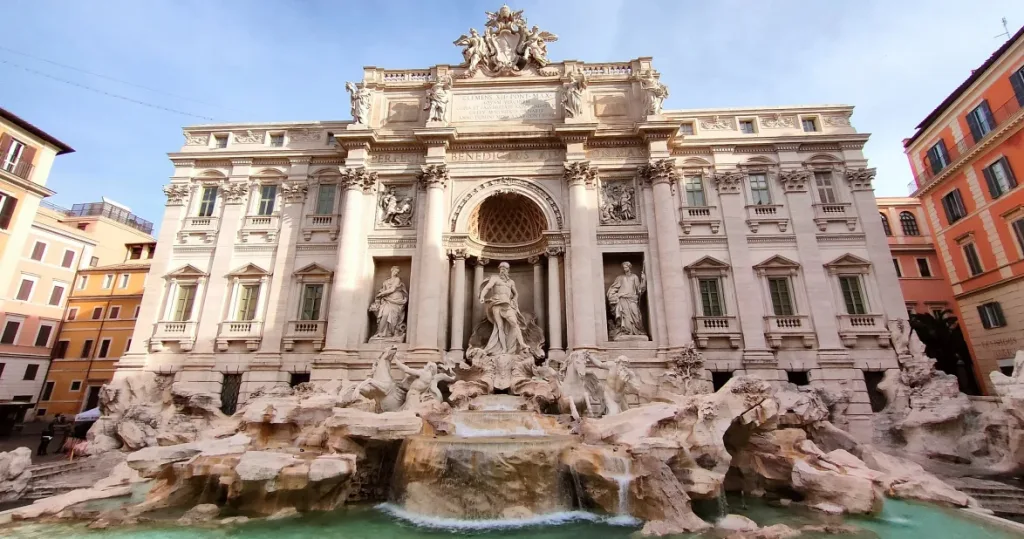
About the Fontana Di Trevi
The Trevi Fountain, known as Fontana di Trevi in Italian, is a mesmerizing masterpiece of Baroque art located in the heart of Rome. Nestled in the Trevi district of Rome, the Trevi Fountain is a grandiose representation of Neptune, the god of the sea, standing triumphantly in a shell-shaped chariot. The fountain’s sculptures and intricate details make it a true marvel, drawing millions of visitors from around the world.
One of the most enchanting times to visit the Trevi Fountain is at night when it’s beautifully illuminated, casting a magical glow on the water and sculptures. It’s a romantic spot and a popular destination for couples and tourists alike. The best time to visit is either early morning to avoid crowds or late evening to experience its romantic allure. A well-known tradition associated with the Trevi Fountain is tossing a coin over your left shoulder with your right hand into the fountain. It’s believed that if you do this, you ensure your return to Rome. Tossing a second coin can bring love, and a third can lead to marriage. Whether you’re admiring its sculptures, making a wish, or simply basking in its grandeur, the Trevi Fountain is a captivating symbol of Rome’s eternal charm.
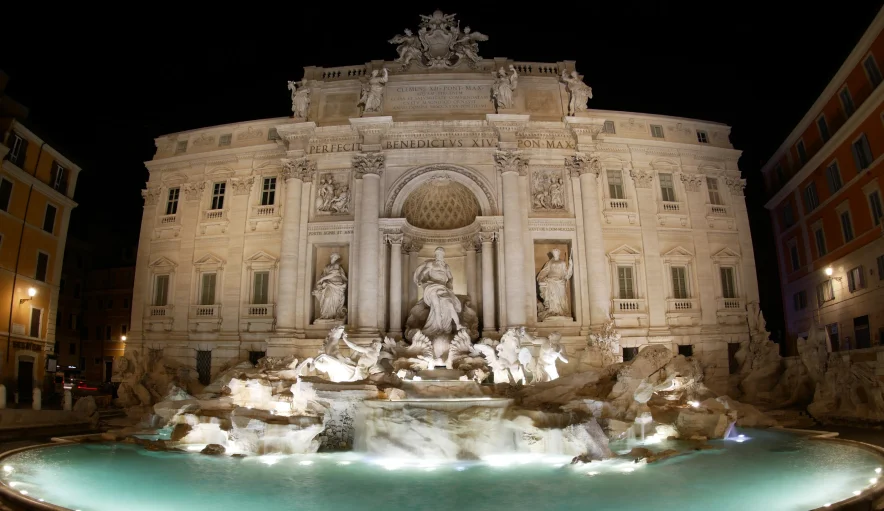
History of the Fontana Di Trevi
The Trevi Fountain history is a story of artistic vision, architecture, and cultural significance dating back to ancient Rome. The site of the Trevi Fountain was originally the endpoint of one of the aqueducts that supplied water to ancient Rome. In 19 BC, during the Roman Empire, Agrippa, a Roman statesman, constructed a fountain here, which served as a simple basin where people could access clean water.
The modern Trevi Fountain we see today was commissioned by Pope Clement XII in the 18th century. He organized a competition for the design, which was eventually won by architect Nicola Salvi. Nicola Salvi began construction in 1732, and after his death in 1751, Giuseppe Pannini completed the fountain following Salvi’s original design. The fountain is a spectacular example of Baroque architecture and art. The tradition of throwing coins into the Trevi Fountain is believed to have started in the mid-20th century. People toss a coin over their left shoulder with their right hand to ensure a return to Rome. A second coin can be thrown for a wish, and a third for love.
The Trevi Fountain underwent a major restoration project that was completed in 2015, funded by the Italian fashion company Fendi. This restoration helped to preserve and enhance the fountain’s beauty. Today, the Fontana di Trevi continues to captivate visitors with its grandeur, beauty, and the rich history that surrounds it. It remains a symbol of eternal love and the timeless allure of Rome.
The Architecture
The Trevi Fountain in Rome is a stunning example of Baroque architecture that exudes grandeur and artistic mastery. Situated at the junction of three roads (hence its name, “Trevi”), this magnificent fountain is a true marvel.
The central focal point of the Trevi Fountain is the colossal statue of Oceanus, the god of the sea, who stands atop a chariot drawn by two magnificent seahorses, each guided by a Triton. These sculptures’ dynamic compositions and minute details convey a sense of movement and power. With intricate decoration, Corinthian pillars, and niches with sculptures, the entire design is symmetrical and harmonious. The grandeur of the fountain is enhanced by the Palazzo Poli in the background, which contrasts sharply with the water’s flow.
Its location at the junction of three roads, or “tre vie,” gives it its name. When night falls, the Trevi Fountain is bathed in soft, golden illumination, creating a romantic and enchanting ambiance. The best time to visit this architectural masterpiece is either early in the morning to avoid crowds or in the evening to witness its magical transformation under the city’s night lights. This remarkable architectural structure is a symbol of Rome’s eternal beauty and cultural heritage.
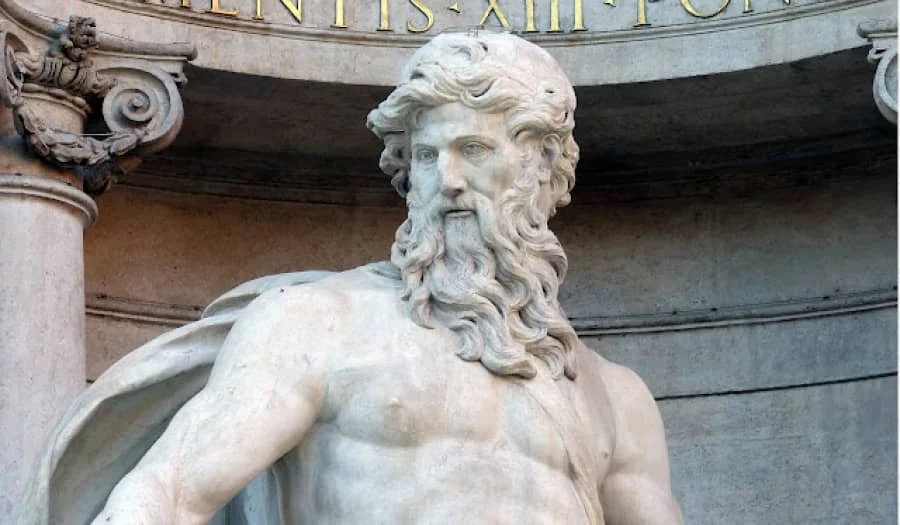
Tips for your visit
- Timing is Key: The best time to visit the Trevi Fountain is in the early morning or late evening to avoid large crowds.
- Toss a Coin: Participate in the tradition of tossing a coin over your left shoulder into the fountain. One coin ensures your return to Rome, two coins for a future romance, and three coins for marriage or divorce.
- Respect the Space: Remember that the Trevi Fountain is a work of art and a cultural treasure. Be respectful, don’t climb on it, and refrain from touching the sculptures.
- Take Photos: Capture the beauty of the fountain, but be mindful not to block the view for others. Early morning or late evening provides softer lighting for stunning photos.
- Location: The Trevi Fountain is located in the Quirinale district of Rome, within walking distance of other attractions like the Spanish Steps and the Pantheon.
- Stay Aware: Be cautious of pickpockets, especially in crowded areas. Keep your belongings secure.
- Historical Significance: Learn about the fountain’s history and significance beforehand to appreciate its artistry fully.
- Fountain Restoration: Occasionally, the fountain may be partially covered due to restoration work. Check in advance if this affects your visit.
- Don’t enter the fountain: Even though the weather is warm, you shouldn’t go swimming inside the Roma fountain. Don’t just stand there with your feet in the water or dangle them.
How to arrive
Reaching the Trevi Fountain in Rome is easy, as it’s located in the historic center of the city. Here are various ways to arrive:
By Metro: Take Line A (the red line) and get off at the “Barberini – Fontana di Trevi” station. From there, it’s a short walk to the fountain.
By Bus: Several bus lines have stops near the Trevi Fountain, including bus numbers 51, 62, 71, 85, 160, and 492. Check the routes and schedules for the most convenient option.
By Taxi: Taxis are readily available throughout Rome. You can simply ask a taxi driver to take you to the Trevi Fountain. Be sure to use licensed taxis with meters.
By Hop-on Hop-off Bus: If you’re using a hop-on-hop-off bus tour to explore Rome, many of these buses have a stop near the Trevi Fountain, making it a convenient option for tourists.



